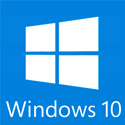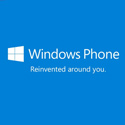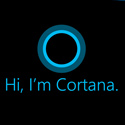This article describes several methods that you can use to work around an issue in which you cannot delete a Microsoft Exchange 2000 Server or Microsoft Exchange Server 2003 mailbox store.
When you try to delete a mailbox store from a server that is running Exchange 2000 or Exchange 2003, you may receive the following error message:
One or more users currently use this mailbox store. These users must be moved to a different mailbox store or be mail disabled before deleting this store.
ID no: c1034a7f
Exchange System Manager
The following sections offer a different method to find the mailboxes that are homed on a mailbox store. When you have determined that a particular account owns a mailbox on a particular store, you can either move the mailbox or disable the account.
Method 1: Use the LDP tool to search for mailboxes that are on a mailbox store
- Start Ldp.exe.
- Click Connection, and then click Connect.
- Enter the name of a domain controller, and then click OK.
- Click Connection, and then click Bind.
- Enter the user name, the password, and the domain name of an administrative account, and then click OK.
- On the View menu, click Tree.
- Make sure that the Base DN box is blank, and then click OK.
If the Base DN box is not blank, clear its contents, and then click OK.
- Right-click the container that you want to search, such as the CN=Users container, and then click Search.
- Click the Filter box, and then type the following:
(&(objectCategory=person)(objectClass=user)(msExchHomeServerName=/o=ORGANIZATION NAME/ou=ADMINISTRATIVE GROUP NAME/cn=Configuration/cn=Servers/cn=SERVER-NAME-TO-REMOVE))
- Click Subtree, and then click Run.
- When you have identified which users have mailboxes on this store, you can use Active Directory Users and Computers to move the mailboxes to a different store or to delete the user’s mailbox.
Method 2: Use the LDP tool (Ldp.exe) to browse for mailboxes that are on a mailbox store
You can use the LDP tool to find all the accounts that have mailboxes on a particular mailbox store. This tool is included with the Microsoft Windows 2000 Support Tools package.
To use the LDP tool to find all the accounts that have mailboxes on a particular mailbox store, follow these steps:
- Start Ldp.exe.
- Click Connection, and then click Connect.
- Enter the name of a domain controller, and then click OK.
We recommend that you enter a domain controller in the root domain of the forest.
- Click Connection, and then click Bind.
- Enter the user name, the password, and the domain name of an administrative account, and then click OK.
- On the Browse menu, click Search.
- Click to select the “DC=domainname,DC=local” by Base DN check box.
- Click the Filter box, and then type the following text:
(msExchHomeServerName=*Exchange Virtual Server Name*)
- Click Subtree, and then click Run.
- Identify the users who have mailboxes on this store. Then, use the Active Directory Users and Computers snap-in to move the mailboxes to a different store or to delete the mailboxes.
For more information about how to use the LDP tool, see the LDP documentation in the Microsoft Windows 2000 Resource Kit.
For more information about how to find data by using the LDP tool, click the following article number to view the article in the Microsoft Knowledge Base:
Method 3: Use Active Directory Users and Computers to browse for mailboxes that are on a mailbox store
- Start Active Directory Users and Computers on a computer that has Exchange System Manager installed on it.
- In Active Directory Users and Computers, click View, click to select the Advanced Features check box, and then click OK.
- Click View, and then click Choose Columns.
- In the Modify Columns box, click Exchange Mailbox Store in the Hidden Columns list, click Add, and then click OK to add the Exchange Mailbox Store to the Displayed Columns list.
An Exchange Mailbox Store column appears in Active Directory Users and Computers that shows the mailbox store that a user has a mailbox on.
- When you have identified which users have mailboxes on this store, you can use Active Directory Users and Computers either to move the mailboxes to a different store or to delete the user’s mailbox.
Method 4: Use Active Directory Users and Computers to search for mailboxes that are on a mailbox store
- Start Active Directory Users and Computers.
- Right-click the domain that you want, and then click Find.
- Click the Advanced tab, click Field, point to User, and then click Exchange Home Server.
- In the Condition list, click Ends with, type the name of the Exchange computer, and then click Find Now.
- If you are prompted to add the current criteria to your search, click Yes.
- When you have identified which users have mailboxes on this store, you can use Active Directory Users and Computers either to move the mailboxes to a different store or to delete the user’s mailbox.
The mailbox search results appear in the bottom pane.
Method 5: Use the LDIFDE tool (Ldifde.exe) to create an export file that contains the mailboxes that are on a mailbox store
- At a command prompt, type an LDIFDE command that resembles the following. Then press ENTER.
ldifde -d “DC=ROOT,DC=COM” -f c:\output.txt -r “(&(objectCategory=person)(objectClass=user)(msExchHomeServerName=/o=ORGANIZATION NAME/ou=ADMINISTRATIVE GROUP NAME/cn=Configuration/cn=Servers/cn=SERVER-NAME-TO-REMOVE))”
- Quit the command prompt.
- Start Notepad or some other text editor, and then load the Output.txt file that you created in step 1 to view the mailboxes that are on the mailbox store.
- When you have identified which users have mailboxes on this store, you can use Active Directory Users and Computers either to move the mailboxes to a different store or to delete the user’s mailbox.
For more information about the LDIFDE tool, type the following command at a command prompt on a computer that is running a product that is listed in the “Applies To” section:


 November 7th, 2011
November 7th, 2011  Kapuwa
Kapuwa  Posted in
Posted in 



